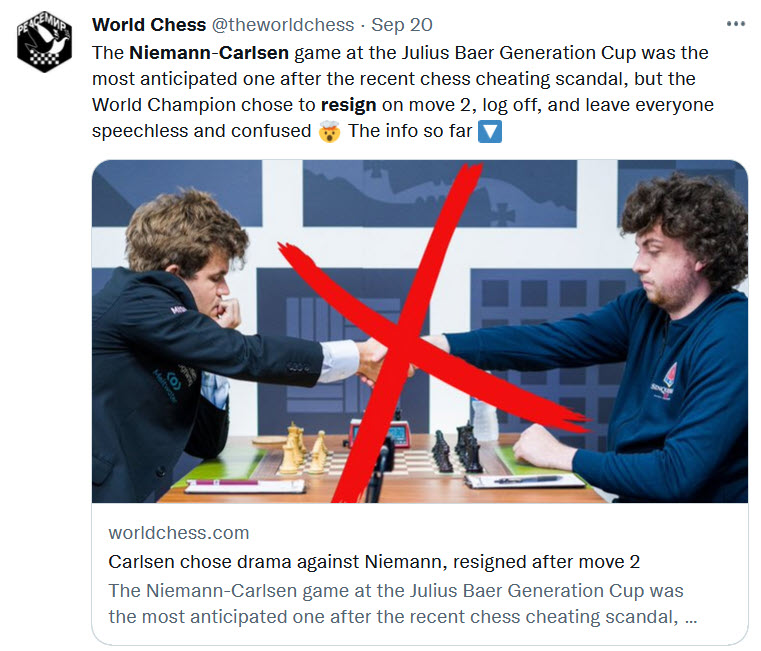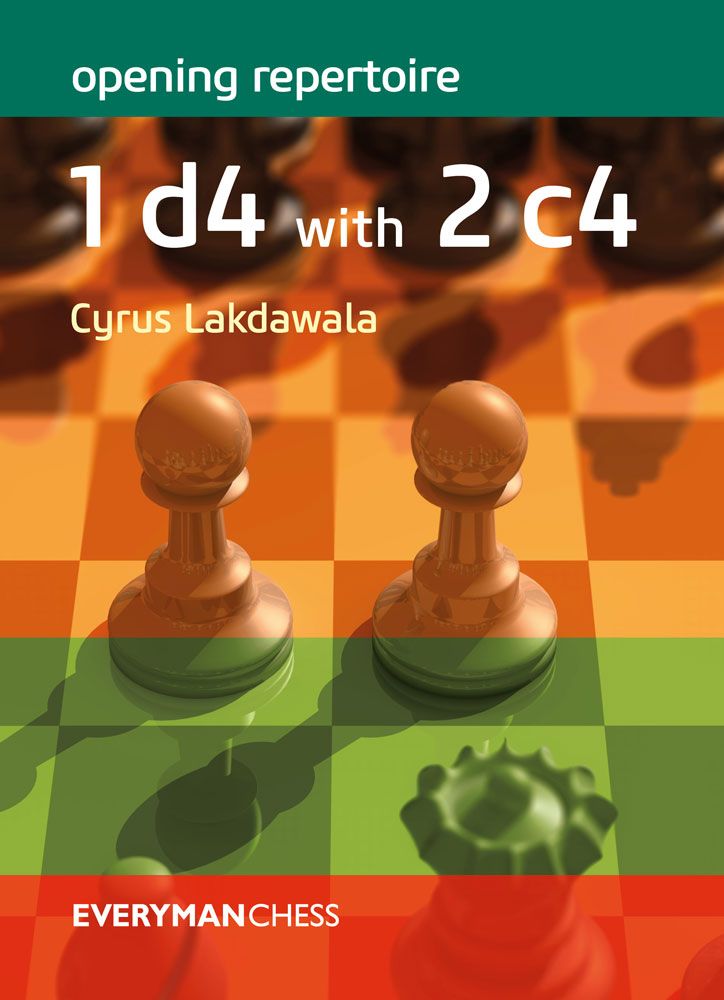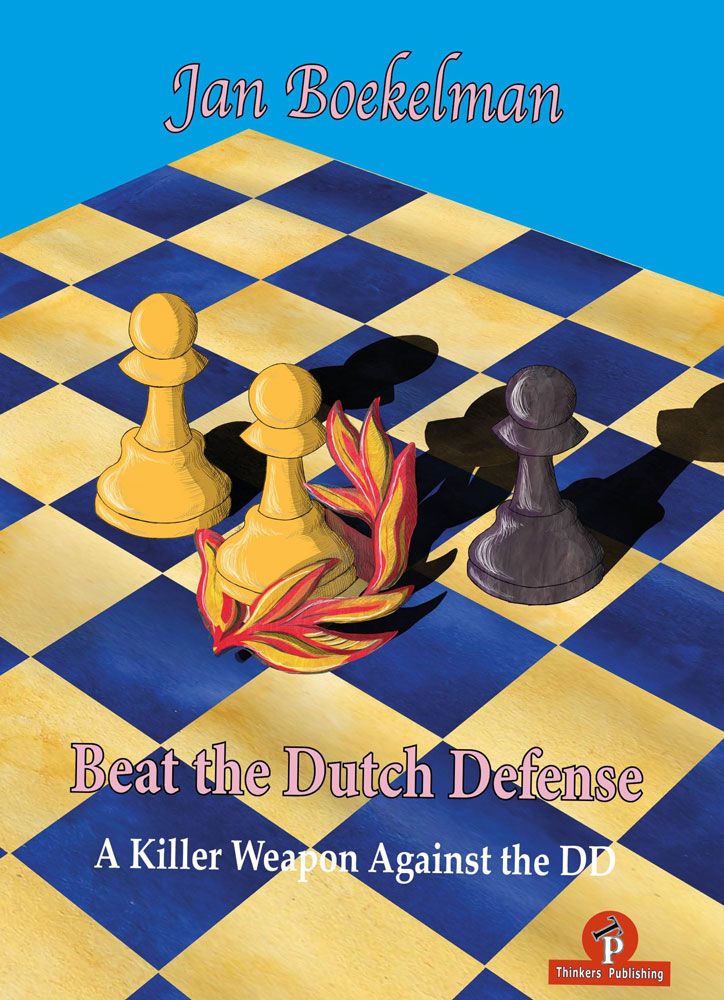Much has been made recently of the top-level game Hans Neimann – Magnus Carlsen, played at the Julius Baer Generation Cup, which ended abruptly after 1. d4 Nf6 2. c4 1-0.

One way or another, chess has been dragged down to gutter level, but at least it gave the social media people inspiration for a plethora of memes and other not-quite-funny jokes, especially once they realized that Cyrus Lakdawala’s book Opening Repertoire: 1 d4 with 2 c4 (Everyman Chess, 2019) was perfect for the cause.
Yet it is worth remembering that one can still play for a win with 1. d4 even without having to play 2. c4. Furthermore, the London System has no need to make a guest appearance.
Jan Boekelman’s Beat the Dutch Defense (Thinkers Publishing) offer a case in point.
After 1. d4 f5, common anti-Dutch methods with club players are 2. Nc3 and 2. Bg5, both of which have been advocated in numerous repertoire books. Boekelman bucks the trend by resurrecting 2. e4.
The Staunton Gambit has been out of favor for a very long time but this new book aims to put the bite back into White’s game.
A lot of the fun comes with the desire to keep the opponent away from his favorite lines.
‘Welcome to an aggressive but sound gambit system against the Dutch Defense! Who would not want to play a system against an opening that is theoretically sound, promises good attacking chances and avoids learning reams of theory about the Leningrad Dutch, the Stonewall or the Classical Dutch, opening set-ups our opponent knows everything about?’
After 2…fxe4 (Black’s alternatives are unpromising) 3. Nc3 Nf6 White has three decent choices: 4. f3, 4. g4 and 4. Bg5, the latter of which is easily the best try for White to play for an advantage.
Black must resist the urge to play the natural-looking 4…d5?, which is a big mistake.
White simply plays 5. Bxf6 exf6 followed by 6. Qh5+ g6 7. Qxd5, leaving Black with a shambolic position. I have seen several games go this way in Open tournaments over the years. It is not such an obvious trap, but it is a classic case of punishing Black for the aggressive – yet weakening – opening lunge of f7-f5.
Players with the white pieces have long been reluctant to play the Staunton Gambit due to the line recommended to Black by theory.
This is:
Therefore, I was most interested to see what Boekelman had in mind to take this particular bull by the horns.
Instead of 6. Qd4 Nf7, after which Black is fine and has been for decades, the recommendation here is to play 6. Qe2.
This was played several times by Gennadij Timoscenko in the mid-1990s. One point is that in the older line with 6. Qd4 Nf7, Black can jab the queen with a timely …e7-e5, limiting White’s choices, whereas after 6. Qe2 Nf7 7. h4 e5? is just extremely good for White.
Maybe it really is time to resurrect the Staunton Gambit, especially as faster time-limits are now increasing in popularity. This books certainly provides plenty of food thought. As the author says: ‘I trust that this book will provide you with the basis for many victories against the Dutch!’
Meanwhile, the excitement of early queen moves in 1. d4 openings continues in The Richter-Veresov Attack: Qd3 Variation by Eric J. Fleischman (Mongoose Press).
The blurb informs us:
‘Right away, you’ll be taking your opponents out of their preparation and into your comfort zone. While the Richter-Veresov has developed its own “book” over the years, Eric Fleischman shows you how to bypass a lot of that body of theory, too, with an early deployment of the queen to d3, an idea sometimes known as the Amazon Attack.’
Remarkably, there is more than one way to play the Richter-Veresov with an early Qd3.
The one which receives the most coverage here is 1. d4 d5 2. Nc3 Nf6 3. Bg5 Nbd7 4. Qd3, but there is also a hyper-accelerated version with 1. d4 Nf6 (or 1…d5) 2. Qd3.
This looks ridiculous but there are some good points behind the ultra-early queen move. White prevents 2…Bf5 (after 1. d4 d5 2. Qd3) and prepares 3. e4 in the other line (for example, 1. d4 Nf6 2. Qd3 g6 3. e4). Sometimes White achieves e2-e4 a little later, but the queen will be already be in a position to offer support anyway.
Well, that is certainly an interesting wat to play. Will your club opponents know how best to meet 2. Qd3? I doubt it.
I now wonder if it will be possible to construct an entire repertoire around very early queen moves, especially as Forward Chess has just added Starting Out: The Scandinavian by Jovanka Houska (Everyman Chess), which makes it very easy indeed for anyone playing with the black pieces to develop the queen as quickly as possible against 1. e4, thanks to 1…d5 2. exd5 Qxd5.
The queen is, after all, the strongest of all chess pieces. Why not get her straight into the action, to see what problems we can create for the opponent?
Sean Marsh
- Dover Books are finally here! - November 20, 2024
- Book Review: Moves 3 to 10 by Nery Strasman - August 9, 2024
- The Life and Games of Dragoljub Velimirovic (Volume 2) by Georg Mohr and Ana Velimirovic-Zorica - July 23, 2024





